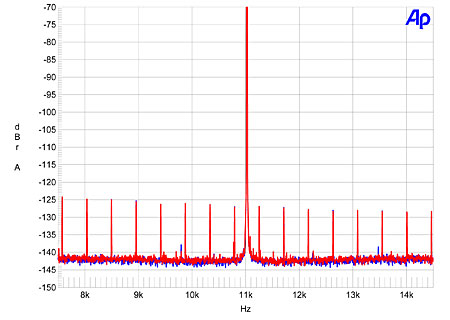The question is ofter ask whether jitter is audible. It is a hot topic on at least three forums at the moment. The only thing we know for sure is that random jitter in amounts from tens to hundreds of nanoseconds is audible, the threshold level depending on the equipment, the listener and the music under test.* Whether random jitter in lower amounts is audible, and whether other types of jitter are audible (and if so at what levels), is unproven because there have have been no scientifically rigorous tests undertaken to so determine. “Debating” about it will not resolve the issue, though it certainly drives a forum’s post count higher.
There is no reason for audiophiles not to seek out transports and DACs that have low measured jitter. It will be one less thing to worry about. Of course, there are very few transports and DACs whose jitter has been measured, so good luck in that regard.
It would be interesting if there were any scientifically rigorous listening tests which established at what level periodic or correlated jitter is actually audible.
It would also be interesting to see on a graph where, in reference to 0db, the artifacts attributable to jitter fall when jitter is on the order of 250 picoseconds or less, which is a more realistic figure for jitter for current transports and DACs than the tens to hundreds of thousands of picoseconds referred to in the studies.
One graph I recently found in Stereophile shows the $449 CambridgeAudio DAC Magic. As you can see, the jitter artifacts for the right channel (red) are at -125db and for the left channel (blue) are less than -140db on its digital input. Compare that to say an Audio Research Ref 5 preamp which has a S/N ratio of 109db, and you can see that the jitter is 15-30db below the noise floor. Although JA doesn’t give the actual jitter measurements, the DACMagic specification is <130ps.

Fig.11 Cambridge DacMagic, high-resolution jitter spectrum of analog output signal, 11.025kHz at –6dBFS,sampled at 44.1kHz
with LSB toggled at 229Hz, 16-bit data. Center frequency of trace, 11.025kHz; frequency range, ±3.5kHz (left channel blue, right red).
If you can buy a DAC with a jitter spec of <130ps for $449, why those that debate the issue want to show jitter graphs using 2ns-10ns (2,000-10,000ps) to make the point that jitter is audible is beyond me. It’s at best disingenuous. Does anyone even know of a transport or DAC so poorly made that it has 2,000-10,000ps of jitter? So the next time someone posts a chart showing “just a few” nanoseconds of jitter and makes the argument that it’s audible, ask them to re-post the chart showing 130ps of jitter and make the argument again. Then sit back and wait for the hemming and hawing to begin.
Is the jitter shown in the graph audible? I don’t know. I’m fairly certain that it is easily masked by the noise floor of even the best preamplifiers. The numbers would seem to indicate that. But since there are no listening tests which answer the question, no one knows with certainty.
Buy a decent transport and DAC, and worry instead about your room acoustics. Jitter today is among the least of your worries.
Here’s an interesting graph. Stereophile found that the Apple iPod had 225ps of jitter. It looks like there is one jitter spuriae at -113db with the rest of the jitter at under -118db

Fig.10 Apple iPod, high-resolution jitter spectrum of analog output signal, 16-bit AIF data (11.025kHz at -6dBFS
sampled at 44.1kHz with LSB toggled at 229Hz). Center frequency of trace, 11.025kHz; frequency range, ±3.5kHz.
Is the 225ps of jitter on an iPod audible? Again, no scientifically rigorous listening tests have been done, so no one can answer with certainty, but at -118db, it’s not very likely - even theoretically. You can buy a new iPod Touch for $199.
*E.g., E. Benjamin and B. Gannon, ‘‘Theoretical and audible effects of jitter on digital audio quality,’’ Preprint of the 105th AES Convention, #4826 (1998), and Detection threshold for distortions due to jitter on digital audio, Acoust. Sci. & Tech. 26, 1 (2005)


